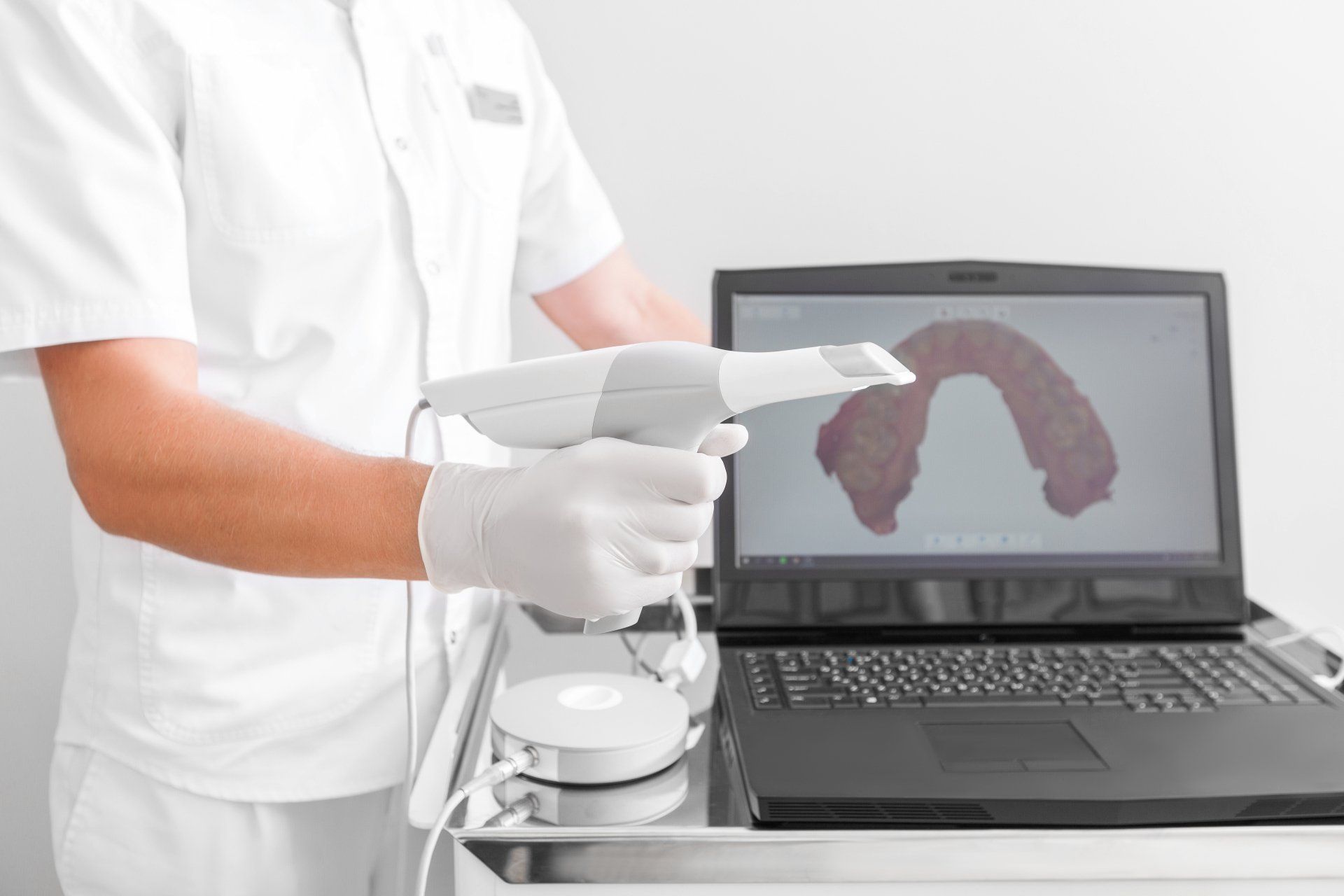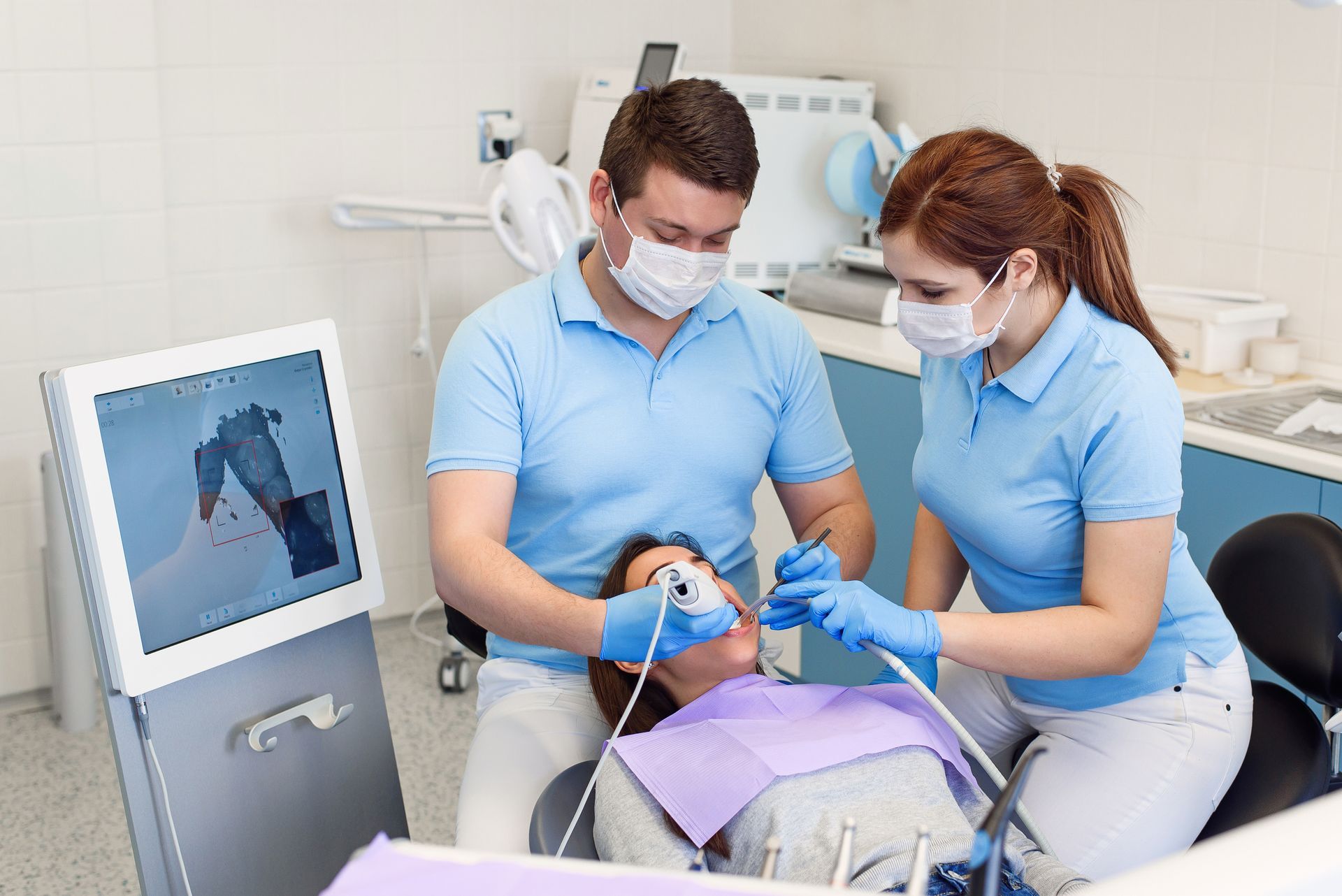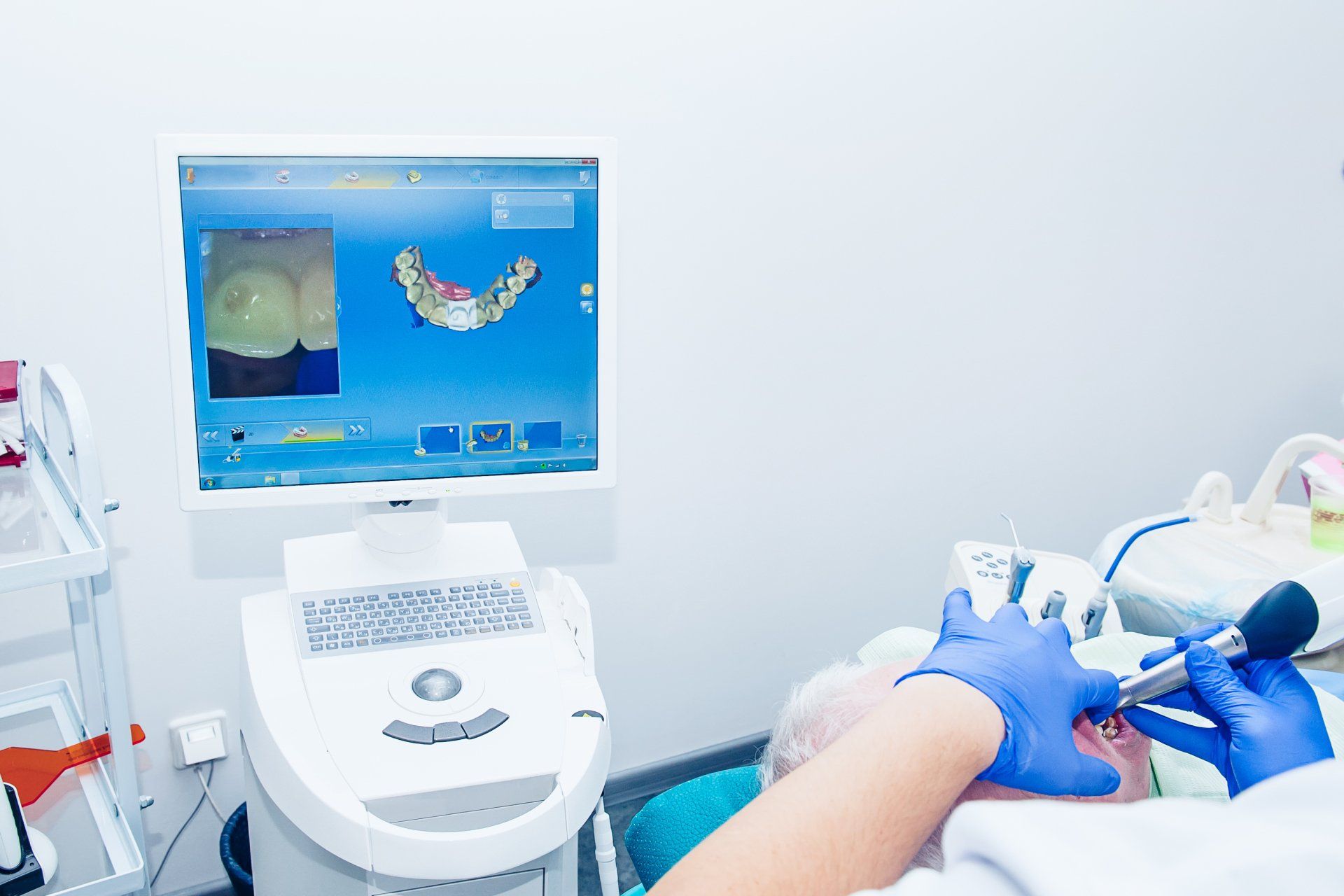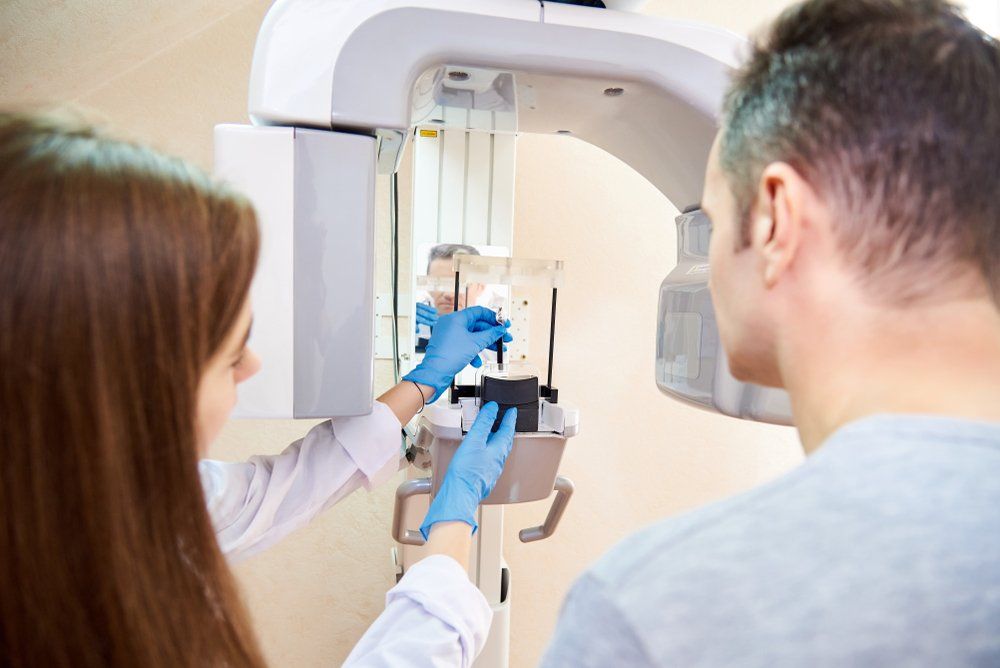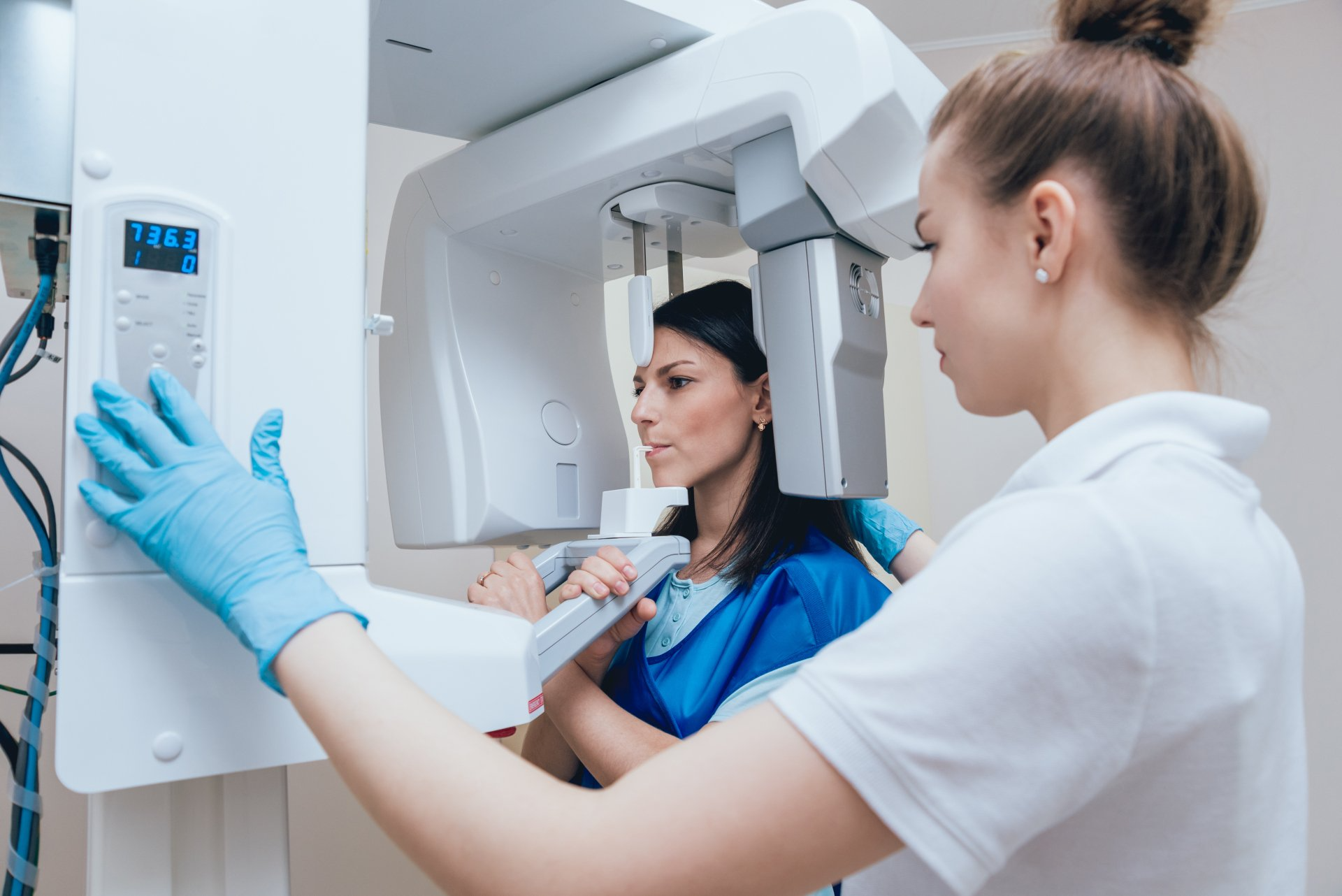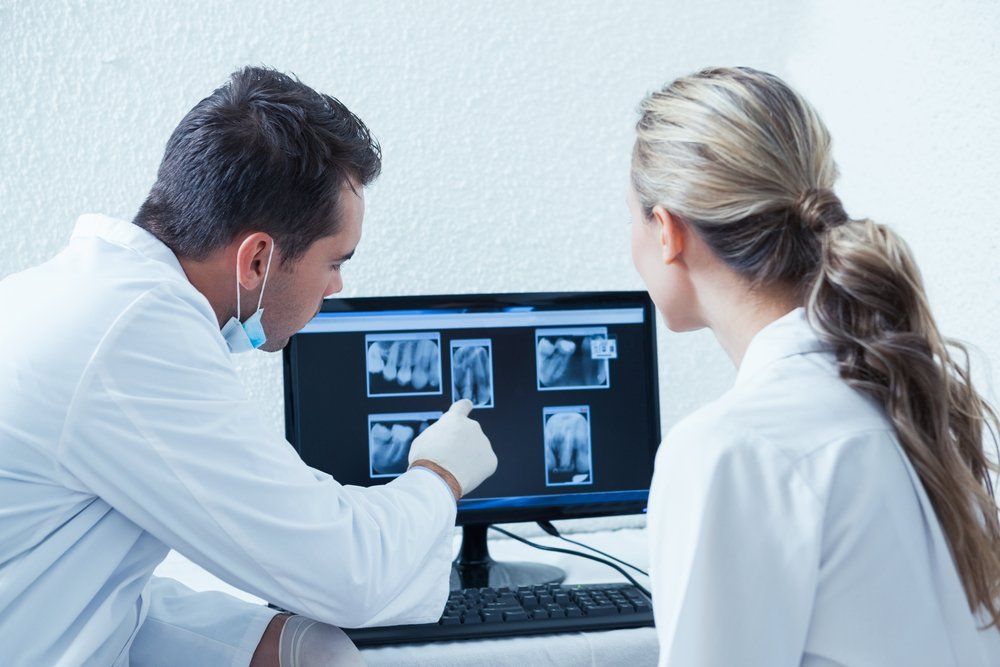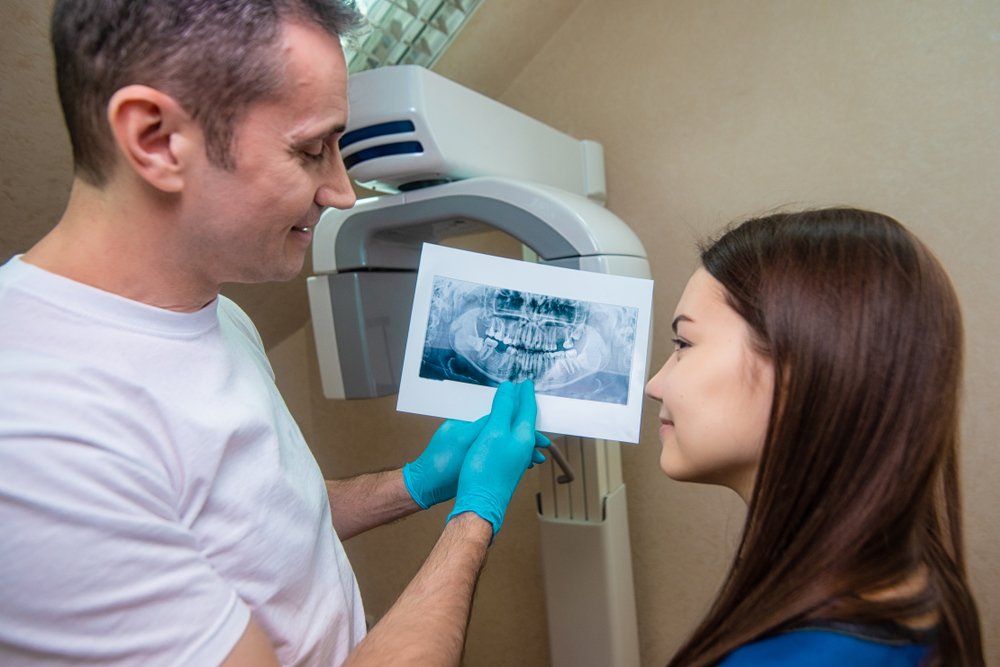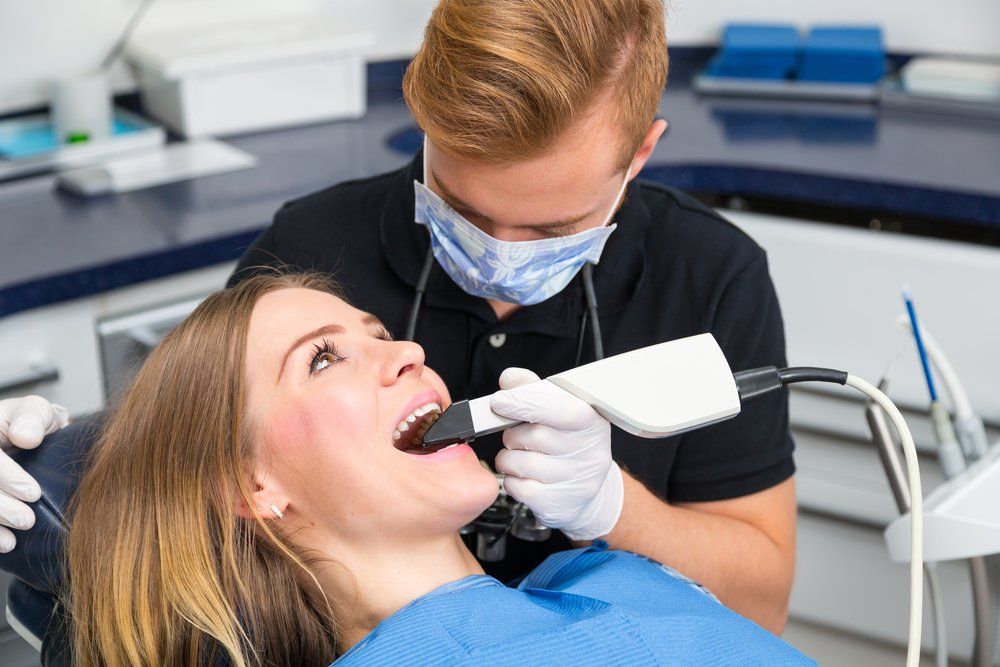Dental Technology
Experience the Future of Dental Care with Advanced Technology
Dental technology has introduced remarkable innovations over the past few years, making dental appointments faster, more comfortable, and far more precise. Many of the once time-consuming tasks in dentistry have been streamlined, allowing treatments to be completed with greater efficiency and accuracy.
Advancements in technology have already transformed our daily lives at home and work, so it was only a matter of time before they reshaped the way patients experience dental care. Today, a visit to the dentist is not just about checkups and cleanings, it’s about experiencing the latest advancements designed to improve your health, comfort, and results. Here are some of the cutting-edge technologies we proudly use in our office:
-
CBCT Machine
The CBCT (Cone Beam Computed Tomography) machine is a specialized imaging tool used to create detailed 3D images of your teeth, bones, soft tissues, and nerve pathways. This advanced technology gives dental professionals a comprehensive view of your oral and facial structures, allowing for more accurate diagnosis and precise treatment planning. Other great benefits include:
- You can see highly detailed 3D images that reveal issues not visible through traditional X-rays, such as hidden infections or bone loss.
- You can benefit from more precise planning for procedures like dental implants, root canals, and oral surgeries.
- You can experience safer, faster, and more predictable treatments thanks to better visualization of your anatomy.
- Digital 3D scans provide clear documentation that can help when submitting information for insurance approvals.
- CBCT scans are quick, non-invasive, and comfortable, with images available almost immediately for review during your visit.
-
Digital X-Rays
Introduced in 1987, nearly 90 years after traditional x-rays came to fruition, digital radiography combined the power of computer technology with electric sensors and tiny bursts of radiation. Rather than printing the results on film, images form almost as soon as the sensors are placed in our mouths, projecting on a computer screen. Digital x-ray technology does demand additional training for dentists, though the majority of practitioners are adamant that the advantages are worth the commitment. Today, a lot of dental offices only offer patients digital x-rays because, in multiple ways, it is the superior option to traditional radiography.
- Less Expensive | Digital x-rays will generally cost you less than the traditional alternative because the cost of film to develop images for the latter adds up. In contrast, digital x-ray imaging projects right onto our computer.
- Better Storage | Since these digital x-ray images are transferred to a computer system, it allows for easier storage of your oral health records. Your data can be transferred from one dentist to another without any medical data being lost in the exchange.
- Finer Images | Digital x-ray images produce a better resolution than their traditional counterpart. Also, old-fashioned x-rays can only project images in 25 various shades, whereas a digital image can reveal up to 256 shades of grey. Digital radiography also has the advantage of accessing more angles within our mouths, providing a streamlined view of a patient's entire oral structure. With the assistance of computer programs, dentists can even enhance the digital images further, for a focused view.
-
iTero Intraoral Camera
The iTero Intraoral Scanner is a compact, handheld digital imaging tool used to create highly accurate 3D models of your teeth and gums. About the size of a marker, the iTero scanner allows dental professionals to capture detailed images quickly and comfortably, without the need for messy traditional impressions. Some of the key benefits include:
- You can view precise 3D visuals of your teeth and bite, helping you better understand your dental health and treatment options.
- You can track changes over time, seeing the difference before, during, and after treatment, such as with Invisalign aligners.
- Real-time, high-resolution scans allow dental professionals to detect issues like misalignments, worn teeth, or gum recession early, helping to plan and prevent future problems.
- Digital scans improve communication with insurance providers by offering accurate records for quicker approvals.
- Since the images are captured instantly and processed digitally, the scanning process significantly reduces chair time, making your visits faster and more comfortable.
-
Intraoral Camera (generic)
About the same size as a pen, the intraoral camera is a digital imaging tool used to capture clear, high-resolution photos of your teeth, gums, and other areas inside your mouth. Intraoral cameras help dental professionals detect early signs of issues such as cavities, gum disease, and cracked teeth with enhanced accuracy. Other great benefits include:
- You can see detailed images of your mouth, helping you better understand areas needing more attention at home.
- You can easily view before-and-after images to track the progress of your treatments.
- You can see magnified visuals that assist in diagnosing problems early, making treatments more effective and less invasive.
- High-quality images provide clear documentation that can simplify and support insurance claims.
- Intraoral cameras save time during appointments, as images are captured instantly and reviewed on the spot.
-
CEREC®
CEREC® (Chairside Economical Restoration of Esthetic Ceramics) is a revolutionary dental technology used to design, create, and place high-quality ceramic restorations like crowns, veneers, and bridges—all in a single appointment. This advanced system eliminates the need for temporary restorations and multiple visits. Other great benefits include:
- You can receive custom-made crowns, veneers, or bridges in just one visit, saving you time and reducing the need for follow-up appointments.
- You can benefit from restorations that are highly durable, natural-looking, and precisely matched to your tooth colour
- You can enjoy a more comfortable experience without messy impressions, thanks to digital 3D scanning.
- CEREC restorations can help strengthen your natural teeth while preserving more of your healthy tooth structure.
- The digital design and milling process provides fast, accurate results, allowing for a beautiful and functional smile the same day.
-
BIOLASE Epic X Laser
The BIOLASE Epic X Laser is a versatile dental tool that uses advanced laser technology to perform a wide range of soft tissue procedures with greater comfort and precision. It is commonly used for gum contouring, periodontal therapy, and pain management treatments. Other great benefits include:
- You can experience faster healing and less discomfort compared to traditional surgical methods, thanks to the laser’s minimally invasive approach.
- You can benefit from more precise procedures, often reducing the need for sutures and minimizing bleeding.
- You can enjoy reduced anxiety, as laser treatments are generally quicker, quieter, and less invasive.
- Laser therapy can help treat gum disease, promote tissue regeneration, and assist in managing oral pain with non-invasive techniques.
- BIOLASE Epic X treatments are safe, effective, and efficient, helping you achieve healthier results with fewer visits.
-
Surgically Clean Air Filtration
The Surgically Clean Air Filtration System is an advanced air purification solution specifically engineered to enhance the quality of indoor air in dental and medical environments. By integrating this cutting-edge technology, we create a safer, healthier space for both patients and staff. Here are three key features that set the Surgically Clean Air system apart:
Multi-Stage Filtration- The system uses a comprehensive, multi-stage filtration process that includes HEPA filters, activated carbon filters, and UV-C light sterilization. This powerful combination removes airborne particles, allergens, odors, and harmful microorganisms, ensuring that the air you breathe is clean, fresh, and safe.
Enhanced Airflow- Surgically Clean Air units are built to optimize airflow by continuously circulating and purifying large volumes of air. This ensures even, consistent air quality across the entire office, helping to maintain a healthier environment for everyone.
Quiet and Energy- Efficient Operation
Despite its robust performance, the system operates quietly, preserving a peaceful and professional atmosphere. Its energy-efficient design allows it to run continuously without a major impact on energy consumption, supporting both environmental responsibility and patient comfort.
-
VELscope Oral Cancer Screening
The VELscope® Oral Assessment System is a handheld device used to help visualize abnormalities in the soft tissues of the mouth, including potential cancerous and pre-cancerous changes. This technology is used alongside the traditional intraoral and extraoral head and neck examination. Unlike some other screening devices, the VELscope requires no dyes or extended testing procedures. A VELscope exam is quick and comfortable, typically completed during a routine hygiene visit in just about two minutes.
Using a bright blue light, the VELscope causes the soft tissues in the mouth to naturally fluoresce, highlighting healthy tissues and making abnormal areas more visible. Because early changes in oral tissue can be difficult to detect with the naked eye, this enhanced visualization greatly aids in the early discovery of oral cancer or dysplasia. Early detection is critical, as it significantly improves treatment outcomes—raising the five-year survival rate for oral cancer patients to approximately 83%.

